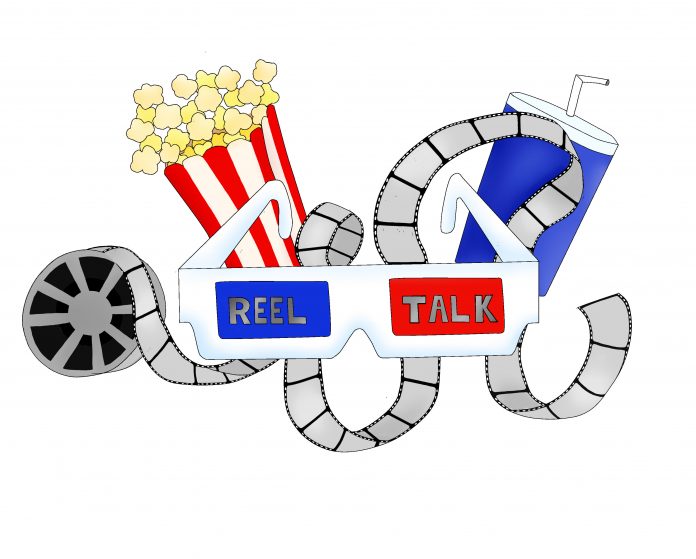Let me preface this by saying that I really enjoyed “It: Part Two.” I think they do the large cast movie quite well, and the characters were ridiculously loveable (not to mention their adult selves were very well cast). The scares were pretty silly, but so effective that I found myself jumping and even shouting at times. And further, I found it heartening that they allowed their male characters to express the full range of human emotions. I feel like we don’t get enough horror heroes these days who can cry and say I love you, and it made me glad to see it. So overall, I’d say “It: Part Two” is a good movie.
… But “It: Part Two” is not a good gay movie.
I’ve noticed an influx in “Reddie” (Richie x Eddie) content online since the movie’s release. At first, I read it as a reaction to the movie having a canonically gay couple, and felt excited to have the chance to see an LGBTQ+ storyline play out in my favorite genre. But when I actually saw the movie, I didn’t really see a gay storyline at all. Just some homophobic violence here and some heavy subtext there. It was a letdown, to say the least.
There’s a lot of horrible packed into the first few minutes of “It: Part Two.” We begin with a hate crime, culminating in the brutal assault and murder of Adrian Mellon. After being beaten by a gang of homophobic delinquents and thrown into the river to die, he is attacked and viciously killed by Pennywise, and it all happens in front of his terrified boyfriend. From the research I’ve done (which didn’t involve reading the book, sorry), Stephen King based this scene off a real crime, meaning to link homophobic violence in Derry to Its presence. But in the movie, it’s impossible to get that reading from this scene. And it didn’t feel the same as watching a background character get offed in a slasher movie, either; I remember thinking vaguely, “If you’re letting him get beaten, don’t let him get eaten. This is too much.” It feels off-color.
Part of me thought that maybe the writers made it ultra gruesome in order to foreshadow the existence of “Reddie.” Or that maybe this “Reddie” was created specifically to apologize for the Adrian Mellon scene. But then came the actual gay storyline, and it didn’t really deliver after all. It’s only ever heavily implied that Richie is gay. He never says it or acts upon his feelings, so there’s this eerie kind of plausible deniability you can feel floating around back there.
The second chapter of “It” deals with the effects of childhood trauma on the characters’ adult lives. Everyone has something from the past that they are ashamed about, or that they cannot stop dwelling on. Some of the characters really do manage to flesh out these parts of themselves, but Richie, with the trauma of being bullied affecting the way he perceives his level of power and masculinity, remained disappointingly surface level. They did a similar thing to Mike, I remember, using him more as a knowledge-wielding plot device than as a character with deteriorating psychological depths to be explored. The plot really did both of them a disservice there, because I think that they would have been really interesting.
The main thing I wondered about Richie was why he had never come out. Certainly homophobia still existed in 2016, and there are definitely still people who feel unsafe to be open about it today, for valid reasons. But Richie is an adult white man with no family who works as a comedian in Los Angeles, so the audience doesn’t have a clue as to exactly why he keeps his orientation a secret. The only reason I could come up with was that maybe his writers would have to stop writing him such heterocentric jokes for his standup routines. If, for some reason, he still feels as if he needs to keep his sexuality a secret as an adult, then we should know why.
The movie’s timeline has been heavily updated to both entrench ‘Part One’ in 80s nostalgia and to create a recognizable modern world for ‘Part Two,’ and for that reason I expected Richie’s unresolved-romantic-feelings-for-Eddie plotline to come to some sort of fruition. But it just felt very much like a story that would have been written in 1986, when being gay may have felt more like a “dirty little secret,” as described by Pennywise, to some. And since no gay plotline at all existed in the novel, the writers had the freedom to do whatever they wanted with this one. And thus, the ball was dropped. I watched this movie in Japan, where LGBTQ+ characters are a lot less mainstream. Seeing queer storylines play out in a popular movie is important overseas, but when I watched this movie, I kind of shuddered to think about the image of sexuality in America this movie was putting out there. Maybe it’d be more accurate if it were set in 1986, as in the novel. But for a film set in 2016, this part of the story was missing a crucial update.
The phrase “’It: Part Two’ said gay rights” constantly floats around Twitter. But did it? Did it really say gay rights? Sure, Richie and Eddie have a nice relationship, especially when they’re so sweet and playful together in their flashbacks. But Richie’s sexuality is handled poorly in his adult life. Richie doesn’t act as if he feels repressed, but he also never seems to feel any inclination to confess his feelings, either; they’ve just sort of assigned him this hidden sexuality without giving it any depth.
In the context of queer cinema, “It: Part Two” hasn’t really done anything for the LGBTQ+ community. In fact, I might argue that it’s played an active role in keeping us complacent. For a long time, we’ve taken the “heavily implied gay character” and ran with them, because it was all we had, and that in turn has produced more of the same. The more we accept representation that does nothing for us, that is designed for the sake of minimizing things bigots can complain about, the more of this lackluster representation we are going to get. If we want a gay character whose story is fleshed out or explored, if we want something better than Reddie, it is necessary to demand more.




































